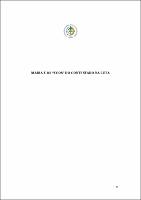Use este identificador para citar ou linkar para este item:
http://rima110.im.ufrrj.br:8080/jspui/handle/20.500.14407/9582| metadata.dc.type: | Tese |
| Título: | A fé que move os indígenas: o monge São João Maria e os “ecos” do Contestado na luta Kaingang pela terra no interior do Paraná |
| Título(s) alternativo(s): | The faith that moves the indigenous people: the monk São João Maria and the "echos" of the Contestado in the Kaingang fight for their lands in the interior of Paraná |
| metadata.dc.creator: | Eurich, Grazieli |
| metadata.dc.contributor.advisor1: | Moreira, Vania Maria Losada |
| metadata.dc.contributor.advisor-co1: | Hill, Jonathan D. |
| metadata.dc.contributor.referee1: | Hill, Jonathan D. |
| metadata.dc.contributor.referee2: | Mattos, Izabel Missagia de |
| metadata.dc.contributor.referee3: | Machado, Paulo Pinheiro |
| metadata.dc.contributor.referee4: | Oliveira Filho, João Pacheco de |
| metadata.dc.contributor.referee5: | Almeida, Maria Regina Celestino de |
| metadata.dc.description.resumo: | Esta tese investiga o conflito entre Kaingang e colonizadores na Vila da Pitanga, região central do Paraná, em 1923, e sua conexão com o monge São João Maria do Contestado. Por meio de uma perspectiva histórica de longa duração e do diálogo com a literatura antropológica sobre movimentos sociorreligiosos, destaca o entrelaçamento entre religião, cosmologia indígena e luta pela terra nos episódios analisados. Aborda o encontro dos indígenas com a religião católica nas reduções jesuíticas do séc. XVII, localizadas no atual território paranaense, e com o processo de catequização religiosa promovida pelo regime imperial no séc. XIX, salientando como os Kaingang reformularam suas estratégias diante da realidade do contato e as reivindicações que encaminharam ao poder estadual e ao Serviço de Proteção aos Índios (SPI), com vistas à demarcação de seus territórios. Analisa o contexto da confusa política de terras implementada pelo estado do Paraná, que não demarcou os limites da Terra Indígena Ivaí após a mudança do sítio original, em 1913, motivando o conflito na década seguinte. Finalmente, analisa a ação armada realizada pelos índios e seus desdobramentos: a invasão da vila em abril de 1923, o massacre dos índios em seus “toldos” e o julgamento dos indígenas pela Justiça. A tese mostra como os diversos encontros dos Kaingang com as missões e aldeamentos religiosos facilitou a adesão deles ao multifacetado movimento do Contestado, transformando a linguagem religiosa em um importante instrumento de expressão política e a luta pela terra em um movimento de cunho sociorreligioso. A pesquisa se apoia em um amplo repertório de fontes primárias, especialmente no processo crime no qual os Kaingang foram julgados pelo homicídio de moradores da vila e os jornais da época. Utiliza ainda mapas, relatórios governamentais e depoimentos dos índios Kaingang sobre o evento, colhidos por meio da História Oral |
| Resumo: | This thesis investigates the conflict between Kaingang and settlers in Vila da Pitanga, central region of Paraná, in 1923, and its connection with the monk, São João Maria do Contestado. Through a long-term historical perspective and a dialogue with the anthropological literature on socio-religious movements, the intertwining of religion, indigenous cosmology, and struggle for land in the analyzed episodes is underscored. This work addresses the meeting of the indigenous Kaingang with the Catholic religion in the 17th century’s Jesuit missions (reducciones), located in the present territory of Paraná, and with the process of religious catechesis promoted by the imperial regime in the 19th century, emphasizing how the Kaingang reformulated their strategies in the face of the reality of the contact and the demands that they forwarded to the state power and to the Service of Protection to the Indians (SPI), with a view to the demarcation of their territories. This work document and analyzes the context of the confused land policy implemented by the Paraná state, which did not demarcate the boundaries of the Ivaí Indigenous Territory after the original site change in 1913, motivating the conflict in the following decade. Finally, it analyzes the armed action carried out by the Indians and their consequences: the invasion of the village in April 1923, the massacre of the Indians in their "tents," and the judgment of the Indians by the courts. The thesis shows how the various meetings of the Kaingang with religious missions and settlements facilitated their adherence to the Contestado's multifaceted movement, transforming religious language into an important instrument of political expression and the struggle for land in the movement. The research relies on a broad repertoire of primary sources and the newspapers, especially in the criminal process, in which the Kaingang were tried for the murder of villagers. It also uses maps, government reports, and statements from Kaingang Indians about the event, collected through Oral History |
| Palavras-chave: | Movimento sociorreligioso Kaingang Paraná Socio-religious movement Kaingang Paraná |
| metadata.dc.subject.cnpq: | História |
| metadata.dc.language: | por |
| metadata.dc.publisher.country: | Brasil |
| Editor: | Universidade Federal Rural do Rio de Janeiro |
| metadata.dc.publisher.initials: | UFRRJ |
| metadata.dc.publisher.department: | Instituto de Ciências Humanas e Sociais |
| metadata.dc.publisher.program: | Programa de Pós-Graduação em História |
| Citação: | EURICH, Grazieli. A fé que move os indígenas: o monge São João Maria e os “ecos” do Contestado na luta Kaingang pela terra no interior do Paraná. 203 f. Tese (Doutorado em História). - Instituto de Ciências Humanas e Sociais, Universidade Federal Rural do Rio de Janeiro, Seropédica, 2019. |
| metadata.dc.rights: | Acesso Aberto |
| URI: | https://rima.ufrrj.br/jspui/handle/20.500.14407/9582 |
| Data do documento: | 29-Abr-2019 |
| Aparece nas coleções: | Doutorado em História |
Se for cadastrado no RIMA, poderá receber informações por email.
Se ainda não tem uma conta, cadastre-se aqui!
Arquivos associados a este item:
| Arquivo | Descrição | Tamanho | Formato | |
|---|---|---|---|---|
| 2019 - Grazieli Eurich.pdf | 2019 - Grazieli Eurich | 3.44 MB | Adobe PDF |  Abrir |
Os itens no repositório estão protegidos por copyright, com todos os direitos reservados, salvo quando é indicado o contrário.

